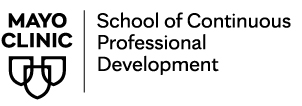| AADI Bioscience - Exhibitor | |
|---|---|
Aadi Bioscience, Inc. is a commercial-stage biopharmaceutical company developing precision therapies for genetically-defined cancers. Aadi’s primary goal is to bring transformational therapies to cancer patients with mTOR pathway driver alterations such as alterations in TSC1 or TSC2 genes, where other mTOR inhibitors have not or cannot be effectively exploited due to problems of pharmacology, effective drug delivery, safety, or effective targeting to the disease site. Aadi’s lead product is FYARRO™, an mTOR inhibitor indicated for the treatment of adult patients with locally advanced unresectable or metastatic perivascular epithelioid cell tumor. More information about FYARRO, including full prescribing information and important safety information can be found at www.fyarro.com, with additional information about Aadi available on the corporate website at www.aadibio.com. Important Safety Information FYARRO is contraindicated in patients with a history of severe hypersensitivity to sirolimus, other rapamycin derivatives, or albumin. Warnings and Precautions Stomatitis Stomatitis, including mouth ulcers and oral mucositis, occurred in 79% of patients treated with FYARRO, including 18% Grade 3. Stomatitis was most often first reported within 8 weeks of treatment. Based on the severity of the adverse reaction, withhold, resume at reduced dose, or permanently discontinue FYARRO. Myelosuppression FYARRO can cause myelosuppression including anemia, thrombocytopenia and neutropenia. Anemia occurred in 68% of patients; 6% were Grade 3. Thrombocytopenia and neutropenia occurred in 35% of patients each. Obtain blood counts at baseline and every 2 months for the first year of treatment and every 3 months thereafter, or more frequently if clinically indicated. Based on the severity of the adverse reaction, withhold, resume at reduced dose, or permanently discontinue FYARRO. Infections FYARRO can cause infections. Infections such as urinary tract infections (UTI), upper respiratory tract infections and sinusitis occurred in 59% of patients. Grade 3 infections occurred in 12% of patients, including a single case each of a UTI, pneumonia, skin, and abdominal infections. Monitor patients for infections, including opportunistic infections. Based on the severity of the adverse reaction, withhold, resume at reduced dose, or permanently discontinue FYARRO. Hypokalemia FYARRO can cause hypokalemia. Hypokalemia occurred in 44% of patients including 12% Grade 3 events. Monitor potassium levels prior to starting FYARRO and implement potassium supplementation as medically indicated. Based on the severity of the adverse reaction, withhold, resume at reduced dose, or permanently discontinue FYARRO. Hyperglycemia FYARRO can cause hyperglycemia. Hyperglycemia occurred in 12% of patients treated with FYARRO, all of which were Grade 3 events. Monitor fasting serum glucose prior to starting FYARRO. During treatment, monitor serum glucose every 3 months in non-diabetic patients, or as clinically indicated. Monitor serum glucose more frequently in diabetic patients. Based on the severity of the adverse reaction, withhold, resume at reduced dose, or permanently discontinue FYARRO. Interstitial Lung Disease / Non-Infectious Pneumonitis FYARRO can cause interstitial lung disease (ILD) / non-infectious pneumonitis. ILD / non-infectious pneumonitis occurred in 18% of patients treated with FYARRO, of which all were Grades 1 and 2. Based on the severity of the adverse reaction, withhold, reduce the dose, or permanently discontinue FYARRO. Hemorrhage FYARRO can cause serious and sometimes fatal hemorrhage. Hemorrhage occurred in 24% of patients treated with FYARRO, including Grade 3 and Grade 5 events in 2.9% of patients each. Monitor patients for signs and symptoms of hemorrhage. Based on the severity of adverse reaction, withhold, resume at reduced dose, or permanently discontinue FYARRO. Hypersensitivity Reactions FYARRO can cause hypersensitivity reactions. Hypersensitivity reactions, including anaphylaxis, angioedema, exfoliative dermatitis, and hypersensitivity vasculitis have been observed with administration of the oral formulation of sirolimus. Hypersensitivity reactions including anaphylaxis have been observed with human albumin administration. Monitor patients closely for signs and symptoms of infusion reactions during and following each FYARRO infusion in a setting where cardiopulmonary resuscitation medication and equipment are available. Monitor patients for at least 2 hours after the first infusion and as clinically needed for each subsequent infusion. Reduce the rate, interrupt infusion, or permanently discontinue FYARRO based on severity and institute appropriate medical management as needed. Embryo-Fetal Toxicity Based on animal studies and the mechanism of action, FYARRO can cause fetal harm when administered to a pregnant woman. In animal studies, mTOR inhibitors caused embryo-fetal toxicity when administered during the period of organogenesis at maternal exposures that were equal to or less than human exposures at the recommended lowest starting dose. Advise pregnant women of the potential risk to a fetus. Advise females of reproductive potential to avoid becoming pregnant and to use effective contraception while using FYARRO and for 12 weeks after the last dose. Male Infertility Azoospermia or oligospermia may be observed in patients treated with FYARRO. FYARRO is an anti-proliferative drug and affects rapidly dividing cells such as germ cells. Immunizations and Risks Associated with Live Vaccines No studies in conjunction with immunization have been conducted with FYARRO. Immunization during FYARRO treatment may be ineffective. Update immunizations according to immunization guidelines prior to initiating FYARRO, if possible. Immunization with live vaccines is not recommended during treatment and avoid close contact with those who have received live vaccines while on FYARRO. The interval between live vaccinations and initiation of FYARRO should be in accordance with current vaccination guidelines for patients on immunosuppressive therapies. Risk of Transmission of Infectious Agents with Human Albumin FYARRO contains human albumin, a derivative of human blood. Human albumin carries only a remote risk of transmission of viral diseases because of effective donor screening and product manufacturing processes. A theoretical risk for transmission of Creutzfeldt-Jakob Disease (CJD) also is considered extremely remote. No cases of transmission of viral diseases or CJD have ever been associated with albumin. Adverse Reactions Adverse Reactions in PEComa The most common adverse reactions (≥30%) were stomatitis in 27 (79%) patients; fatigue and rash in 23 (68%) patients each; infection in 20 (59%) patients; nausea and edema in 17 (50%) patients each; diarrhea, musculoskeletal pain and decreased weight in 16 (47%) patients each; decreased appetite in 15 (44%) patients; cough in 12 (35%) patients; and vomiting and dysgeusia in 11 (32%) patients each. Laboratory Abnormalities in PEComa The most common Grade 3 to 4 laboratory abnormalities (≥6%) were decreased lymphocytes in 7 (21%) patients; increased glucose and decreased potassium in 4 (12%) patients each; decreased phosphate in 3 (9%) patients; and decreased hemoglobin and increased lipase in 2 (6%) patients each. Dosage interruptions Dose interruptions of FYARRO due to an adverse reaction occurred in 22 (65%) patients. Adverse reactions which required dosage interruption in >5% of patients included stomatitis in 6 (18%) patients, pneumonitis in 5 (15%) patients, anemia in 3 (9%) patients, and dehydration, dermatitis acneiform, and thrombocytopenia in 2 (6%) patients each. Dose reduction Dose reductions of FYARRO due to an adverse reaction occurred in 12 (35%) patients. Adverse reactions which required dose reductions in > 5% of patients included stomatitis and pneumonitis in 3 (9%) patients each. Drug Interactions Reduce the dosage of FYARRO to 56 mg/m2 when used concomitantly with a moderate or weak cytochrome P-450 3A4 (CYP3A4) inhibitor. Avoid concomitant use with drugs that are strong CYP3A4 and/or P-glycoprotein (P-gp) inhibitors and inducers and with grapefruit and grapefruit juice. Use in Specific Populations Pregnancy Based on the mechanism of action and findings in animals, FYARRO can cause fetal harm when administered to a pregnant woman. Advise females of the potential risk to a fetus and to avoid becoming pregnant while receiving FYARRO. Lactation Sirolimus is present in the milk of lactating rats. There is potential for serious adverse effects from sirolimus in breastfed infants based on mechanism of action. Because of the potential for serious adverse reactions in breastfed infants from FYARRO, advise women not to breastfeed during treatment with FYARRO and for 2 weeks after the last dose. Females and Males of Reproductive Potential FYARRO can cause fetal harm when administered to a pregnant woman. Verify the pregnancy status of females of reproductive potential prior to starting treatment with FYARRO. Advise females of reproductive potential to use effective contraception and avoid becoming pregnant during treatment with and for at least twelve weeks after the last dose of FYARRO. Advise males with female partners of reproductive potential to use effective contraception and avoid fathering a child during treatment with FYARRO and for at least twelve weeks after the last dose of FYARRO. Although there are no data on the impact of FYARRO on fertility, based on available clinical findings with oral formulation of sirolimus and findings in animals, male and female fertility may be compromised by the treatment with FYARRO. Pediatric The safety and effectiveness of FYARRO in pediatric patients have not been established. Geriatric Use Of the 34 patients treated with FYARRO, 44% were 65 years of age and older, and 6% were 75 years of age and older. Clinical studies of FYARRO did not include sufficient numbers of patients aged 65 and over to determine whether they respond differently from younger patients. Hepatic Impairment FYARRO is not recommended for use in patients with severe hepatic impairment. Reduce FYARRO dosage in patients with mild or moderate hepatic impairment. | |

 Facebook
Facebook X
X LinkedIn
LinkedIn Forward
Forward